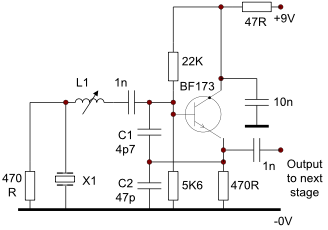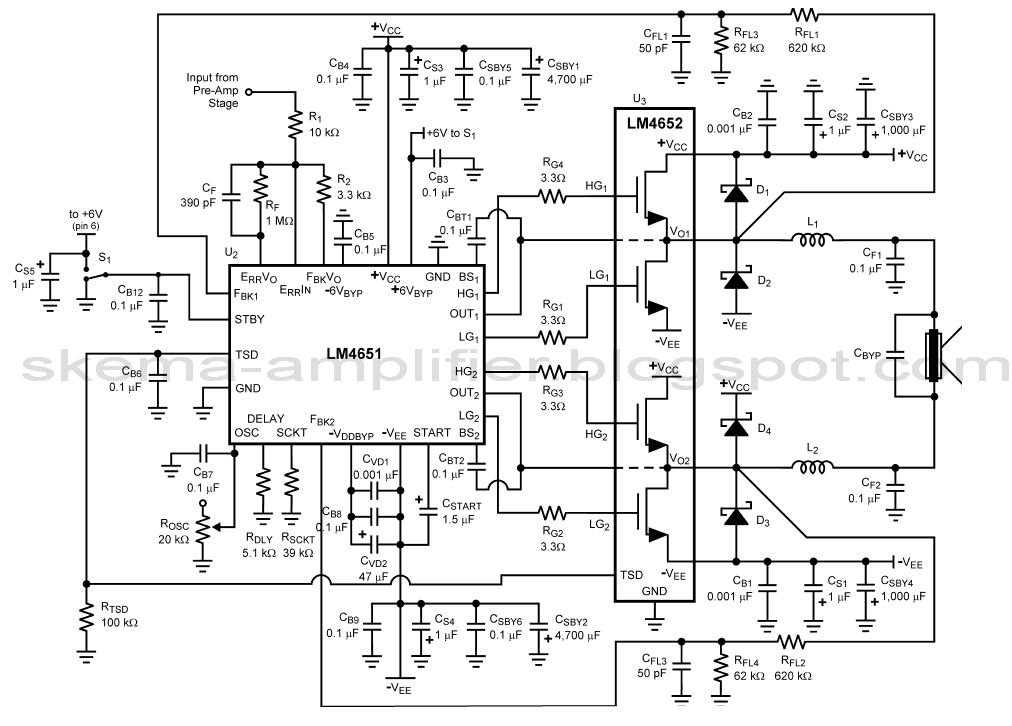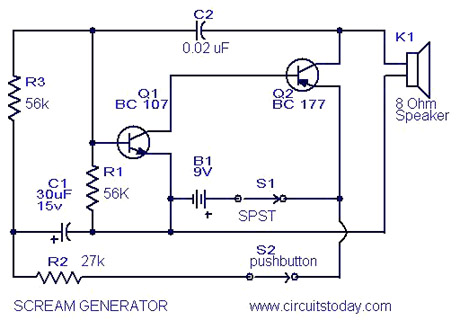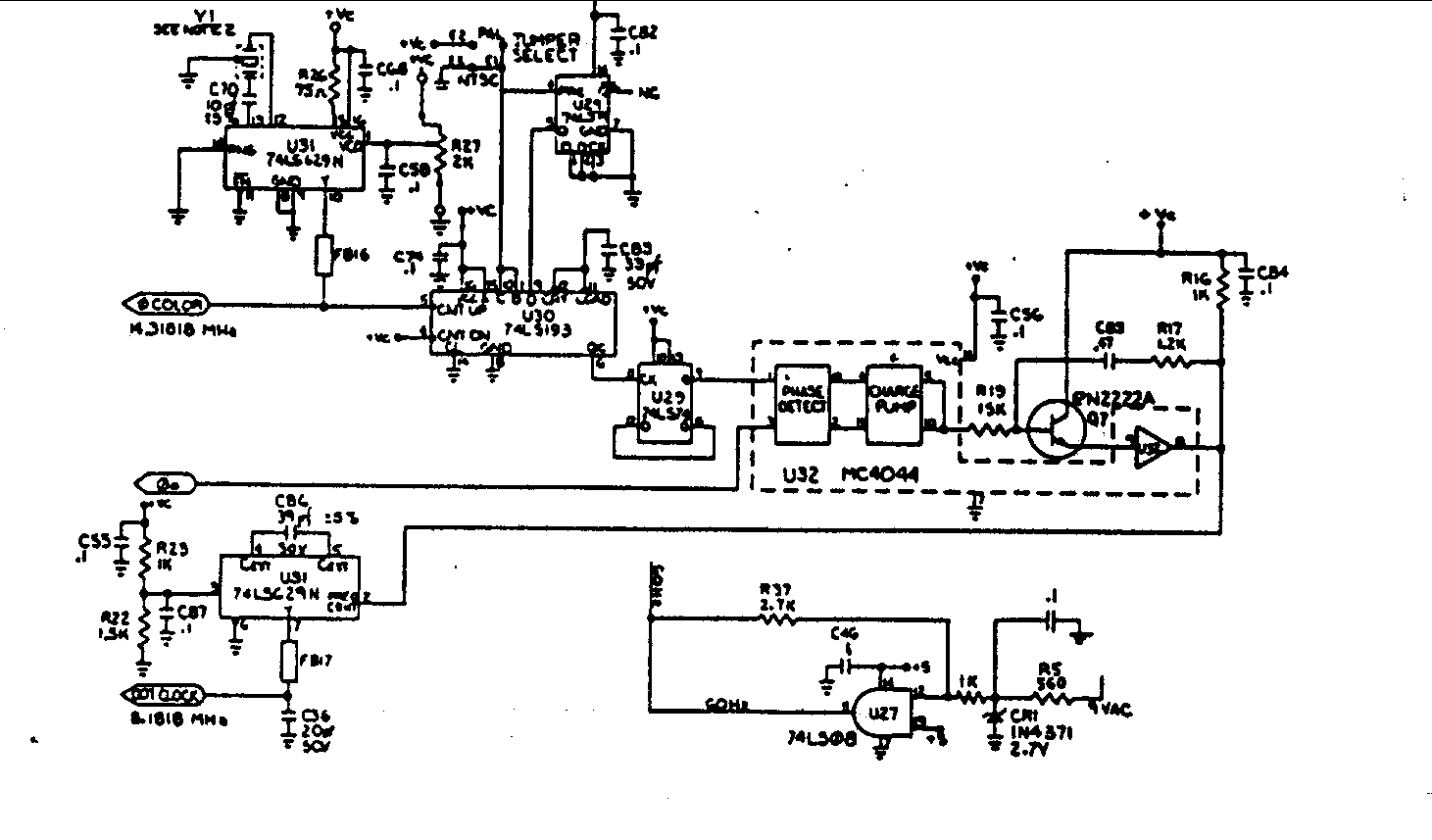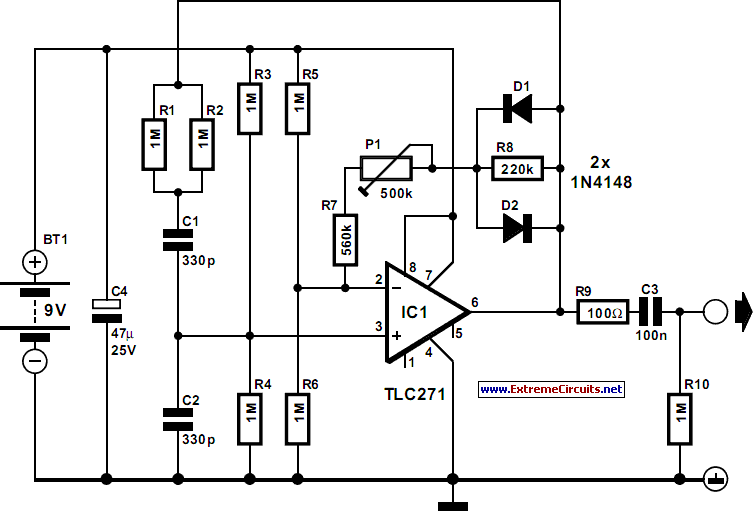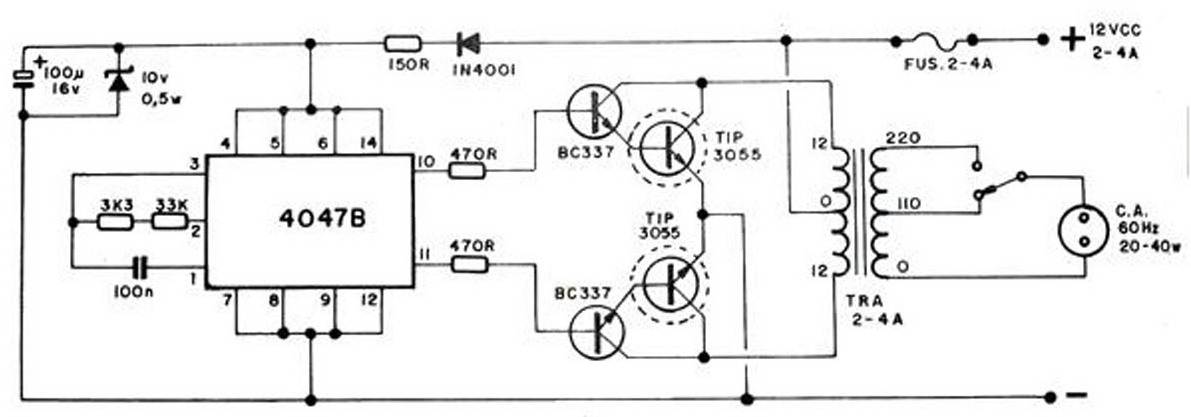
Signal Generators Circuits
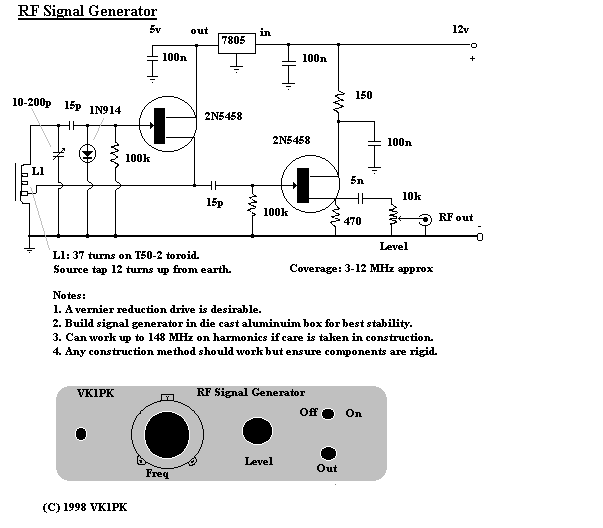
Converting periodic waveforms to square waves is essential for extracting clock signals from data, creating waveform generators, and developing timing-pulse generators. A square-wave conversion circuit is more advantageous when the duty cycle of the square wave is variable and controllable. The circuit depicted in Figure 1 possesses these features and is capable of driving multiple TTL-compatible loads. Many applications necessitate low-frequency signal generators that can produce high-performance, high-resolution signals. This design presents a circuit that generates frequencies ranging from 0 to 1 MHz, offering sinusoidal, triangular, and square-wave outputs. Ramp or sawtooth waveforms are beneficial for various applications, including automatic test equipment, bench test equipment, and actuator control. Discrete components generally determine the waveform frequency; however, drift in these components over time and temperature can limit output frequency accuracy. Low-frequency sine wave generation can be achieved by shifting the phase of the signal through an RC network, ensuring oscillation occurs when the total phase shift is 360 degrees. Stepper motors, synchronous motors that step according to the pulse rate of the driving signal, require a fast stepping rate for quick movement. Due to motor and load inertia, these motors often cannot transition from 0 rpm to the desired revolutions per minute in a single step. A pulse stretcher can increase ECL gate gains by stretching the output pulses of an ECL comparator through the use of large pulldown resistors connected to the -15V supply, maximizing the gains of the emitter-follower output stages and accelerating rising edges while slowing falling edges. An RF oscillator employing a current feedback operational amplifier is a versatile component; its input stage functions as a voltage follower, sampling output current, converting it to voltage across a high impedance, and amplifying it to the output using a high-power, low-output-impedance amplifier. A smooth tone clickless continuous wave (CW) side tone generator circuit is highly effective for generating Morse code tones, suitable for code practice oscillators, tone generators for keyers, or side tone oscillators for transmitters. A square wave modulator with variable frequency and pulse width was developed to meet the needs of a plating facility that required square waves to drive high-voltage operations, necessitating adjustable pulse width and duty cycle, as well as adjustable amplitude.
The circuit for converting periodic waveforms to square waves typically employs a Schmitt trigger configuration, which provides hysteresis to ensure clean transitions between high and low states. The variable duty cycle can be achieved through the use of adjustable resistors and capacitors in the timing network, allowing for fine-tuning of the pulse width. This type of circuit is particularly useful in applications where precise timing is critical, such as in digital communication systems or clock signal generation for microcontrollers.
In the context of low-frequency signal generators, the use of direct digital synthesis (DDS) techniques allows for the generation of high-resolution waveforms. By utilizing a phase accumulator and a digital-to-analog converter (DAC), the output can be finely controlled, resulting in sine, triangular, and square waveforms with minimal distortion. This approach is advantageous in applications requiring precise frequency control and stability.
For sawtooth waveform generation, the use of operational amplifiers in conjunction with capacitors and resistors can create a ramp signal that can be easily adjusted for frequency. The accuracy of the generated waveform can be improved by using precision components and temperature compensation techniques to mitigate drift.
When dealing with stepper motors, it is essential to implement a driver circuit that can handle rapid changes in pulse rates. This can be achieved through the use of microcontroller-based drivers that can provide precise control over the stepping sequence, ensuring smooth acceleration and deceleration.
The pulse stretcher circuit enhances the performance of ECL gates by ensuring that the output pulses are of sufficient duration to drive subsequent stages effectively. By carefully selecting the values of the pulldown resistors, the circuit can be optimized for speed and gain, making it suitable for high-frequency applications.
In RF oscillator designs, current feedback operational amplifiers offer significant advantages due to their high bandwidth and low distortion characteristics. The configuration allows for the generation of stable oscillations while minimizing phase noise, which is critical in communication systems.
Finally, the smooth tone clickless CW side tone generator circuit can be further enhanced by incorporating filters and modulation techniques to improve the quality of the output tone, making it suitable for various applications in amateur radio and telecommunication. The square wave modulator's ability to adjust pulse width and amplitude allows for flexibility in driving applications that require precise control over the waveform characteristics.Converting periodic waveforms to square waves is an integral part of extracting a clock signal from data, creating waveform generators, and making timing-pulse generators. Any square-wave-conversion circuit is more valuable when the square wave`s duty cycle is variable and controllable.
Figure 1 shows a circuit that has these attributes and can drive several TTL-compatible loads. DDS and converter form signal generator : 02/20/03 EDN-Design Ideas / Many applications require low-frequency signal generators that can deliver high-performance, high-resolution signals. This Design Idea presents a circuit that generates frequencies of 0 to 1 MHz. Sinusoidal, triangular, and square-wave outputs are available. DDS device produces sawtooth waveform : 07/10/03 EDN-Design Ideas / Ramp or sawtooth waveforms are useful for a broad range of applications, including automatic-test equipment, bench test equipment, and actuator control.
Discrete components typically set the waveform frequency. Unfortunately, drift in these component values over time and temperature limits the accuracy of the output frequency. Low Frequency Sine Wave Generator: The two circuits below illustrate generating low frequency sine waves by shifting the phase of the signal through an RC network so that oscillation occurs where the total phase shift is360 degrees.
Make a simple ramp generator for stepper motors : 04/04/2002 EDN - Design Ideas / Stepper motors are synchronous motors that step at the pulse rate of the driving signal. For the motor to move quickly, the stepping rate must be fast. However, because of motor and load inertia, the motor often cannot go from 0 rpm to the desired number of revolutions per minute in one step.
Pulse Stretcher Increases ECL Gate Gains : 01/20/94 EDN-Design Ideas / stretches the output pulses of an ECL comparator by operating the ECL line receivers with unusually large pulldown resistors to the -15V supply. The large load resistance maximizes the gains of the emitter-follower output stages and speeds up the rising edges.
At the same Time, the low pulldown current, together with the input and wiring capacitances, slows the falling edges. These actions stretch the positive pulses by approximately2 nsec/stage. RF oscillator uses current feedback op amp : 10/03/2002 EDN - Design Ideas / A current-feedback amplifier is a well-known component with many uses.
Its basic block diagram shows that its input stage is a voltage follower ”in practice, a symmetrical emitter follower (Figure 1). The configuration samples the output current, converts it to voltage across a large impedance, and amplifies it to the output using a high-power, low-output-impedance amplifier.
Smooth Tone Click less CW Side Tone Generator : This circuit is about as good as it gets for generating Morse code tones. It may be used as a code practice oscillator, a Tone generator for a keyer, or a SideTone oscillator for a transmitter.
Square wave modulator has variable frequency and pulse width : 08/08/2002 EDN - Design Ideas / A few years ago, I worked at a disk-drive company. We had a plating facility that required square waves to drive the high-voltage plating operation. The challenge was that the square wave`s pulse width had to be variable, along with the duty cycle. Also, the amplitude of the pulses had to be adjustable. 🔗 External reference
The circuit for converting periodic waveforms to square waves typically employs a Schmitt trigger configuration, which provides hysteresis to ensure clean transitions between high and low states. The variable duty cycle can be achieved through the use of adjustable resistors and capacitors in the timing network, allowing for fine-tuning of the pulse width. This type of circuit is particularly useful in applications where precise timing is critical, such as in digital communication systems or clock signal generation for microcontrollers.
In the context of low-frequency signal generators, the use of direct digital synthesis (DDS) techniques allows for the generation of high-resolution waveforms. By utilizing a phase accumulator and a digital-to-analog converter (DAC), the output can be finely controlled, resulting in sine, triangular, and square waveforms with minimal distortion. This approach is advantageous in applications requiring precise frequency control and stability.
For sawtooth waveform generation, the use of operational amplifiers in conjunction with capacitors and resistors can create a ramp signal that can be easily adjusted for frequency. The accuracy of the generated waveform can be improved by using precision components and temperature compensation techniques to mitigate drift.
When dealing with stepper motors, it is essential to implement a driver circuit that can handle rapid changes in pulse rates. This can be achieved through the use of microcontroller-based drivers that can provide precise control over the stepping sequence, ensuring smooth acceleration and deceleration.
The pulse stretcher circuit enhances the performance of ECL gates by ensuring that the output pulses are of sufficient duration to drive subsequent stages effectively. By carefully selecting the values of the pulldown resistors, the circuit can be optimized for speed and gain, making it suitable for high-frequency applications.
In RF oscillator designs, current feedback operational amplifiers offer significant advantages due to their high bandwidth and low distortion characteristics. The configuration allows for the generation of stable oscillations while minimizing phase noise, which is critical in communication systems.
Finally, the smooth tone clickless CW side tone generator circuit can be further enhanced by incorporating filters and modulation techniques to improve the quality of the output tone, making it suitable for various applications in amateur radio and telecommunication. The square wave modulator's ability to adjust pulse width and amplitude allows for flexibility in driving applications that require precise control over the waveform characteristics.Converting periodic waveforms to square waves is an integral part of extracting a clock signal from data, creating waveform generators, and making timing-pulse generators. Any square-wave-conversion circuit is more valuable when the square wave`s duty cycle is variable and controllable.
Figure 1 shows a circuit that has these attributes and can drive several TTL-compatible loads. DDS and converter form signal generator : 02/20/03 EDN-Design Ideas / Many applications require low-frequency signal generators that can deliver high-performance, high-resolution signals. This Design Idea presents a circuit that generates frequencies of 0 to 1 MHz. Sinusoidal, triangular, and square-wave outputs are available. DDS device produces sawtooth waveform : 07/10/03 EDN-Design Ideas / Ramp or sawtooth waveforms are useful for a broad range of applications, including automatic-test equipment, bench test equipment, and actuator control.
Discrete components typically set the waveform frequency. Unfortunately, drift in these component values over time and temperature limits the accuracy of the output frequency. Low Frequency Sine Wave Generator: The two circuits below illustrate generating low frequency sine waves by shifting the phase of the signal through an RC network so that oscillation occurs where the total phase shift is360 degrees.
Make a simple ramp generator for stepper motors : 04/04/2002 EDN - Design Ideas / Stepper motors are synchronous motors that step at the pulse rate of the driving signal. For the motor to move quickly, the stepping rate must be fast. However, because of motor and load inertia, the motor often cannot go from 0 rpm to the desired number of revolutions per minute in one step.
Pulse Stretcher Increases ECL Gate Gains : 01/20/94 EDN-Design Ideas / stretches the output pulses of an ECL comparator by operating the ECL line receivers with unusually large pulldown resistors to the -15V supply. The large load resistance maximizes the gains of the emitter-follower output stages and speeds up the rising edges.
At the same Time, the low pulldown current, together with the input and wiring capacitances, slows the falling edges. These actions stretch the positive pulses by approximately2 nsec/stage. RF oscillator uses current feedback op amp : 10/03/2002 EDN - Design Ideas / A current-feedback amplifier is a well-known component with many uses.
Its basic block diagram shows that its input stage is a voltage follower ”in practice, a symmetrical emitter follower (Figure 1). The configuration samples the output current, converts it to voltage across a large impedance, and amplifies it to the output using a high-power, low-output-impedance amplifier.
Smooth Tone Click less CW Side Tone Generator : This circuit is about as good as it gets for generating Morse code tones. It may be used as a code practice oscillator, a Tone generator for a keyer, or a SideTone oscillator for a transmitter.
Square wave modulator has variable frequency and pulse width : 08/08/2002 EDN - Design Ideas / A few years ago, I worked at a disk-drive company. We had a plating facility that required square waves to drive the high-voltage plating operation. The challenge was that the square wave`s pulse width had to be variable, along with the duty cycle. Also, the amplitude of the pulses had to be adjustable. 🔗 External reference
